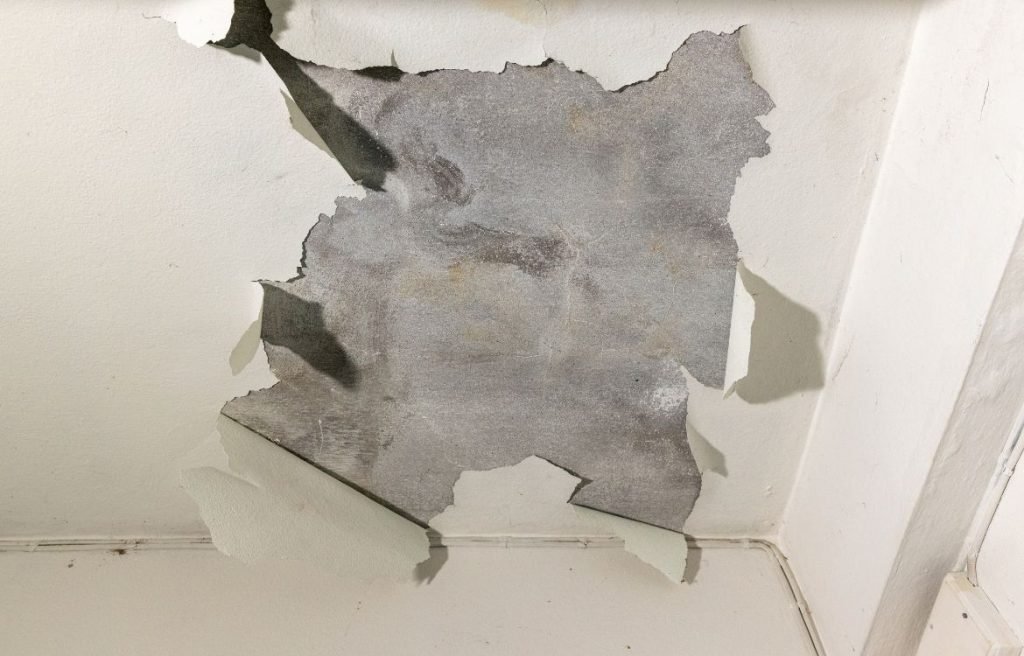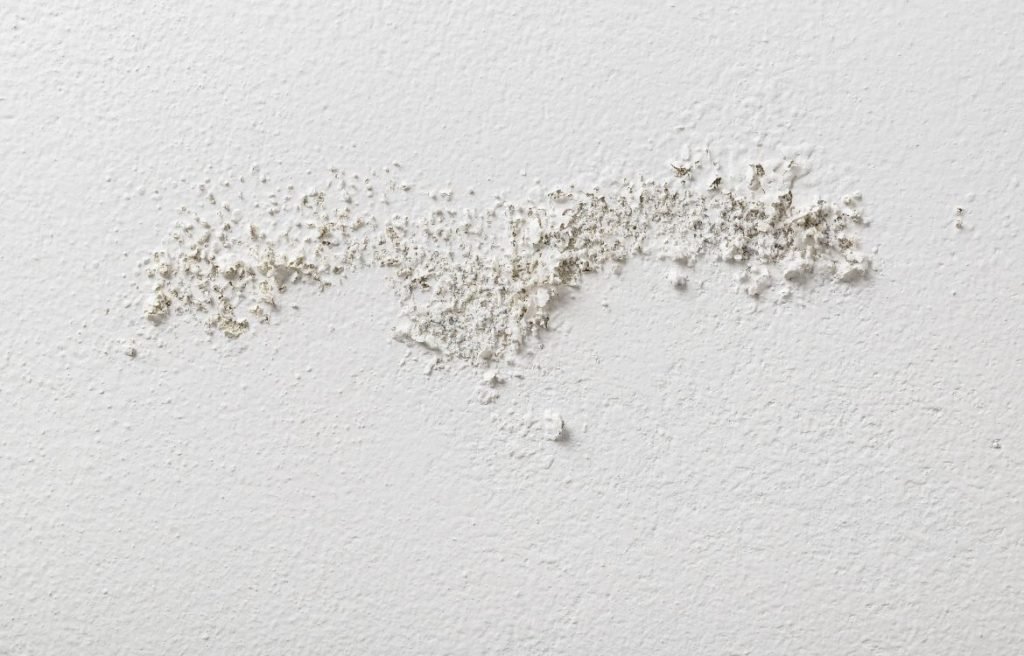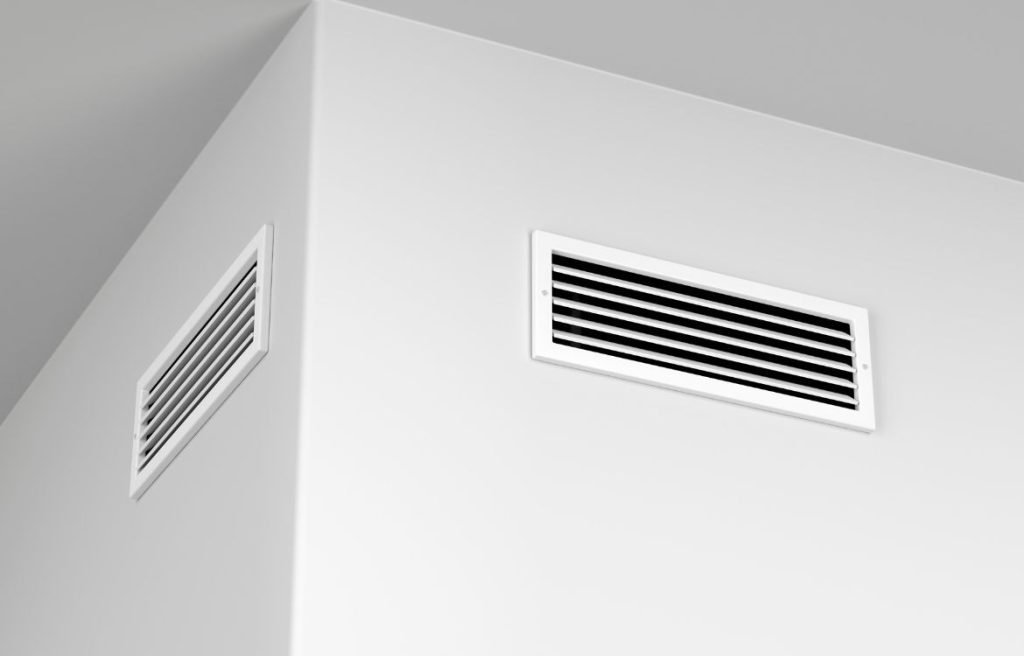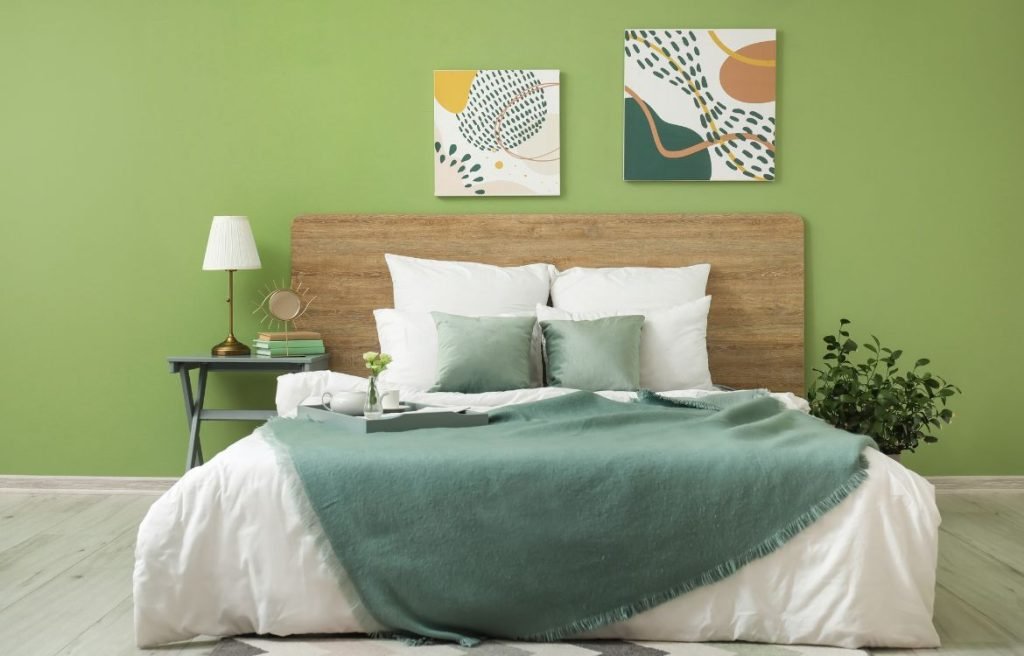Addressing Moisture and Mold Issues in Interior Surface Preparation
Are you in search of effective solutions for addressing moisture and mold issues in interior surface preparation? Look no further! You’ve landed in the right place. Welcome to a comprehensive guide that will equip you with the knowledge and techniques needed to tackle these common challenges.
In this article on addressing moisture and mold issues in interior surface preparation, we will dive deep into the strategies and tips that will help you achieve a flawless and long-lasting paint job. So, whether you’re a homeowner gearing up to prepare your surface for painting or simply seeking useful information on house painting, this content is tailor-made for you.
Let’s explore the world of moisture and mold prevention together and unveil the secrets to successful interior surface preparation.
What is mold?
Mold is a type of fungus that thrives in moist environments and reproduces through the production of spores. It can grow on various surfaces, including walls, ceilings, carpets, and furniture. Mold comes in different colors and textures, ranging from green, black, or white to fuzzy or slimy appearances. While some types of mold are harmless, others can cause health issues and damage to your home.
Conditions for mold growth
To understand how to address moisture and mold issues, it’s important to be aware of the conditions that promote mold growth. Mold requires three main factors to thrive:
- Moisture: Mold needs a source of moisture to grow and spread. Excess humidity, leaks, water intrusion, or condensation can create the ideal conditions for mold development.
- Organic Material: Mold feeds on organic materials such as wood, drywall, carpet, and fabric. If these materials contain moisture, they become a potential food source for mold.
- Warmth: Most molds prefer temperatures between 77°F (25°C) and 86°F (30°C). However, certain molds can still grow in colder or warmer environments.

Health risks associated with mold exposure
Exposure to mold can have adverse effects on your health, especially if you have allergies, respiratory conditions, or a weakened immune system. Some common health risks associated with mold exposure include:
- Allergic Reactions: Mold spores can trigger allergic reactions, leading to symptoms like sneezing, coughing, itchy eyes, and nasal congestion.
- Respiratory Issues: Prolonged exposure to mold can exacerbate respiratory conditions such as asthma and cause respiratory infections.
- Skin Irritation: Direct contact with mold or its spores can result in skin irritation, rashes, or fungal infections.
- Sinus Infections: Mold exposure may contribute to sinusitis, causing symptoms like facial pain, headaches, and nasal congestion.
- Toxic Effects: Certain types of mold, such as black mold (Stachybotrys chartarum), can produce mycotoxins that have the potential to cause severe health problems when inhaled or ingested.
Identifying Moisture and Mold Issues
Common signs of moisture and mold problems
Recognizing the signs of moisture and mold problems is essential for addressing them effectively. Look out for the following indicators:
- Visible Mold Growth: Spotting mold growth on surfaces is a clear sign of moisture issues. It may appear as black or green patches, discoloration, or a fuzzy texture.
- Musty Odors: A persistent musty smell, particularly in enclosed spaces or areas with poor ventilation, suggests the presence of mold.
- Water Stains: Discoloration, watermarks, or yellowish-brown stains on walls, ceilings, or floors indicate water infiltration and potential mold growth.
- Peeling or Cracked Paint: Moisture behind walls or on surfaces can cause paint to peel, crack, or bubble.

Areas prone to moisture and mold
Certain areas of your home are more susceptible to moisture and mold issues. Pay close attention to:
- Bathrooms: High humidity levels and frequent water usage make bathrooms a common breeding ground for mold.
- Kitchens: Steam, cooking activities, and moisture from sinks and dishwashers contribute to moisture buildup.
- Basements: Poor ventilation, groundwater seepage, or flooding can create ideal conditions for mold growth.
- Attics: Inadequate ventilation and roof leaks can lead to moisture accumulation and subsequent mold growth.
The role of humidity in mold growth
Humidity plays a significant role in mold growth. Ideally, indoor humidity levels should be maintained between 30% and 50%. Excessive humidity can create a conducive environment for mold to flourish. Monitor humidity levels using a hygrometer and take steps to control and reduce humidity when necessary. Proper ventilation, dehumidifiers, and air conditioning can help regulate moisture levels and discourage mold growth.
Prevention of Moisture and Mold Issues
Importance of moisture control
Controlling moisture is paramount in preventing mold growth. By addressing and minimizing moisture sources, you can effectively mitigate the risk of mold issues. Here’s why moisture control is essential:
- Mold Prevention: Moisture is the primary catalyst for mold growth. By controlling moisture levels, you can significantly reduce the chances of mold colonization.
- Health and Indoor Air Quality: Excess moisture can lead to mold-related health issues and contribute to poor indoor air quality. Maintaining a dry environment promotes a healthier living space for you and your family.
Proper ventilation and air circulation
Proper ventilation and air circulation are crucial in preventing moisture buildup and mold growth. Consider the following measures:
- Exhaust Fans: Install exhaust fans in bathrooms, kitchens, and laundry rooms to remove excess moisture and odors.
- Windows and Doors: Open windows and doors periodically to allow fresh air to circulate and promote ventilation.
- Cross Ventilation: Create cross ventilation by opening windows on opposite sides of a room to facilitate airflow.
- HVAC Systems: Regularly maintain and clean your heating, ventilation, and air conditioning (HVAC) systems to ensure optimal performance and moisture control.

Regular maintenance and inspection
Regular maintenance and inspection are key to identifying and addressing potential moisture and mold issues before they escalate. Follow these practices:
- Plumbing Check-ups: Inspect your plumbing system regularly for leaks, drips, or signs of water damage. Promptly repair any issues to prevent moisture problems.
- Roof and Gutters: Ensure your roof is in good condition, free from leaks, and clear your gutters of debris to prevent water infiltration.
- Seal Cracks and Gaps: Seal cracks and gaps in walls, windows, doors, and foundations to prevent moisture intrusion.
- Monitor Humidity Levels: Use a hygrometer to monitor indoor humidity levels and take corrective measures if they exceed the recommended range.
Use of mold-resistant products
In areas prone to moisture, using mold-resistant materials and products can be highly beneficial. Consider the following options:
- Mold-Resistant Paints: Opt for mold-resistant paints formulated to inhibit mold growth. These paints contain antimicrobial agents that help prevent mold colonization.
- Mold-Resistant Drywall: Consider using mold-resistant drywall in moisture-prone areas such as bathrooms or basements. These products have moisture-resistant properties that hinder mold growth.
- Mold-Resistant Flooring: Choose flooring materials, such as ceramic tiles, vinyl, or laminate, that are resistant to moisture and mold.
Proper storage and organization
Proper storage and organization practices contribute to preventing moisture and mold issues. Follow these guidelines:
- Avoid Clutter: Cluttered spaces impede proper airflow and make it difficult to identify and address moisture problems. Keep your living areas clean and clutter-free.
- Adequate Spacing: Allow sufficient space between furniture, walls, and other objects to promote airflow and prevent condensation.
- Ventilated Storage: Store items in well-ventilated areas, using shelves or containers that allow air circulation and prevent moisture buildup.
Addressing Existing Moisture and Mold Issues
Safety measures during mold cleanup
When addressing existing moisture and mold issues, it’s crucial to prioritize safety. Mold cleanup should be approached with caution to minimize exposure and potential health risks. Consider the following safety measures:
- Personal Protective Equipment (PPE): Wear protective gear, including gloves, goggles, and a mask or respirator, to shield yourself from mold spores and prevent inhalation or direct contact.
- Proper Ventilation: Open windows and use fans or exhaust systems to ensure adequate ventilation during the cleanup process. This helps to disperse mold spores and reduce their concentration.
- Containment: If dealing with extensive mold growth, consider isolating the affected area with plastic sheeting to prevent the spread of spores to unaffected parts of your home.
- Follow Guidelines: Adhere to guidelines and recommendations from reputable sources, such as the Environmental Protection Agency (EPA), for safe and effective mold cleanup procedures.

Techniques for removing mold from various surfaces
The appropriate technique for removing mold depends on the type of surface involved. Here are some general methods for mold removal:
- Non-Porous Surfaces (e.g., Glass, Metal): Wipe the surface with a damp cloth or sponge and a mild detergent. Rinse thoroughly and allow it to dry completely.
- Porous Surfaces (e.g., Drywall, Wood): In many cases, porous materials with extensive mold growth may need to be removed and replaced to ensure complete remediation.
- Fabric and Upholstery: For mold-infested fabrics, professional dry cleaning or specialized mold removal services may be necessary. Avoid DIY methods that can damage the material.
Always remember to follow specific manufacturer instructions and consult with professionals if you’re unsure about the appropriate cleaning methods for a particular surface.
When to call a professional for mold remediation
While minor mold issues can often be addressed by homeowners, certain situations warrant the expertise of professional mold remediation specialists. Consider the following scenarios when deciding whether to call a professional:
- Extensive Mold Growth: If the mold covers a large area (usually over 10 square feet), professional assistance is recommended to ensure proper containment and thorough remediation.
- Hidden Mold: If mold is suspected behind walls, in air ducts, or other concealed areas, professionals can perform inspections and use specialized tools to identify and address the hidden mold.
- Health Concerns: If you or your family members experience severe allergic reactions or respiratory symptoms when exposed to mold, it’s best to seek professional help for safe and effective mold remediation.
- Structural Damage: If mold growth has caused significant damage to the structure of your home, professionals can assess the extent of the damage and provide appropriate remediation and repairs.
Dealing with water-damaged areas
Addressing water-damaged areas promptly is crucial to prevent mold growth and further structural damage. Follow these steps to handle water-damaged areas effectively:
- Remove Standing Water: If there is standing water, use pumps, wet/dry vacuums, or towels to remove it as quickly as possible. Properly dry the affected area using fans and dehumidifiers.
- Dry Out Moisture: Thoroughly dry the affected area within 48 hours to prevent mold growth. Use fans, dehumidifiers, and open windows to promote airflow and expedite the drying process.
- Sanitize Surfaces: Clean water-damaged surfaces with a mixture of mild detergent and water. Rinse well and allow them to dry completely.
- Inspect for Mold: Monitor the area closely for any signs of mold growth. If mold appears, follow appropriate mold removal techniques or seek professional assistance.
Post-Remediation: Ensuring Mold Does Not Return
Ongoing moisture control strategies
To prevent the recurrence of mold after remediation, implementing ongoing moisture control strategies is vital. Consider the following measures:
- Maintain Optimal Humidity Levels: Monitor and control indoor humidity levels between 30% and 50% to create an environment inhospitable to mold growth. Use dehumidifiers if necessary.
- Proper Ventilation: Ensure adequate ventilation in areas prone to moisture, such as bathrooms, kitchens, and laundry rooms. Use exhaust fans and open windows to facilitate airflow and reduce humidity.
- Address Water Intrusion: Promptly fix any leaks, water damage, or plumbing issues to prevent moisture buildup and the potential for mold growth.
- Insulate Cold Surfaces: Insulate areas where condensation commonly occurs, such as exterior walls, windows, and pipes. Proper insulation helps minimize moisture and condensation.
Regular maintenance and inspections
Regular maintenance and inspections are key to identifying and addressing potential moisture sources before they lead to mold problems. Adopt the following practices:
- Check Plumbing and Fixtures: Regularly inspect pipes, faucets, and fixtures for leaks or drips. Repair any issues immediately to prevent moisture accumulation.
- Monitor Roof and Gutters: Regularly inspect your roof for damage and ensure gutters are clear of debris to prevent water infiltration.
- Maintain Proper Grading: Ensure the ground around your home slopes away from the foundation to prevent water from pooling near the structure.
- Check Caulking and Seals: Inspect caulking around windows, doors, and other openings, ensuring they are properly sealed to prevent water intrusion.
Importance of quick response to water leaks or damage
Timely response to water leaks or damage is crucial in preventing mold growth. Act swiftly when you notice signs of water intrusion:
- Fix Leaks Immediately: Address any water leaks or plumbing issues promptly. Ignoring them can result in prolonged moisture exposure and increased risk of mold development.
- Dry Wet Areas: If water spills occur or leaks are identified, dry the affected area thoroughly within 24 to 48 hours to prevent mold growth.
- Monitor High-Risk Areas: Pay extra attention to areas prone to moisture, such as basements, attics, and crawl spaces. Regularly inspect and maintain these areas to minimize moisture-related problems.

The Role of Interior Surface Preparation in Mold Prevention
Choosing the right materials and finishes
Selecting appropriate materials and finishes is crucial in preventing mold growth. Consider the following factors:
- Moisture-Resistant Materials: Choose materials that are resistant to moisture, such as mold-resistant drywall, moisture-resistant paint, and non-porous flooring options.
- Breathable Finishes: Opt for breathable finishes that allow moisture to escape, reducing the likelihood of condensation and mold growth.
- Anti-Microbial Additives: Consider using paints or coatings with anti-microbial additives that inhibit the growth of mold and mildew.
Importance of proper installation and sealing
Proper installation and sealing of interior surfaces are essential to prevent moisture infiltration and subsequent mold issues. Follow these guidelines:
- Correct Surface Preparation: Ensure surfaces are properly cleaned, dried, and prepared before applying any finishes or coatings.
- Proper Sealing: Seal gaps, cracks, and joints using appropriate sealants to prevent water penetration and mold growth.
- Effective Waterproofing: Apply waterproofing products, such as waterproof membranes or coatings, in areas prone to moisture, such as bathrooms or basements.
The role of insulation in preventing mold
Insulation plays a significant role in preventing mold by reducing condensation and maintaining stable indoor temperatures. Consider the following:
- Exterior Insulation: Adequately insulate exterior walls to minimize temperature fluctuations and prevent condensation on interior surfaces.
- Proper Attic Insulation: Insulate your attic to prevent warm, moist air from reaching the roof and causing condensation, which can lead to mold growth.
- Insulate Pipes: Insulate pipes to prevent condensation and potential leaks that can contribute to moisture-related problems.

FAQ
How do you reduce moisture and mold?
To reduce moisture and mold, ensure proper ventilation in the affected areas, use dehumidifiers to control humidity levels, fix any water leaks or sources of moisture, promote air circulation, and keep surfaces dry. Regularly clean and maintain areas prone to moisture, such as bathrooms and basements, and promptly address any mold growth by cleaning it thoroughly or seeking professional assistance.
What types of material are most likely to develop mold when exposed to moisture?
Materials that are porous, organic, or prone to retaining moisture are most likely to develop mold when exposed to moisture. This includes materials such as wood, drywall, carpet, insulation, fabrics, paper, and cardboard. These materials provide a suitable environment for mold growth if they remain damp or wet for extended periods.
How do you address mold exposure?
If you suspect mold exposure, it is important to take appropriate measures. First, identify and address the source of the mold, such as water leaks or excessive moisture. Then, consider hiring a professional mold remediation company to safely remove the mold and mitigate the damage. Additionally, consult with a healthcare professional if you experience health symptoms related to mold exposure.
How do professionals deal with mold?
Professionals dealing with mold follow a systematic approach. They begin by identifying the source of moisture and fixing it. Then, they establish containment measures to prevent mold spores from spreading. The affected areas are thoroughly cleaned and treated using specialized equipment and cleaning agents. Finally, professionals conduct clearance testing to ensure the mold issue has been successfully resolved.
How do you get rid of surface mold?
To get rid of surface mold, use a solution of water and detergent or a commercial mold cleaner. Scrub the affected area with a brush or sponge, making sure to remove all visible mold. Rinse the area with clean water and dry it thoroughly. It is important to identify and address the underlying cause of mold growth to prevent its recurrence.
What is the best humidity level to prevent mold?
To prevent mold growth, maintain indoor humidity levels below 60% ideally between 30% to 50%. Use a hygrometer to measure humidity and utilize dehumidifiers or air conditioners in humid areas. Proper ventilation and air circulation also help in reducing moisture and maintaining a healthy humidity level.
What material is mold proof?
There is no material that is entirely mold-proof, as mold can grow on any organic material when conditions are suitable. However, certain materials like glass, metal, and plastic are less prone to mold growth as they are non-porous and do not provide a suitable food source for mold. Proper maintenance and moisture control are still necessary to prevent mold growth on these materials.
What kills mold spores in the air?
To kill mold spores in the air, use air purifiers or high-efficiency particulate air (HEPA) filters. These devices can capture and filter out airborne mold spores, reducing their concentration in the air. It is important to address the underlying cause of mold growth and maintain proper moisture control to prevent the recurrence of mold spores in the indoor environment.
Conclusion
Thank you for taking the time to read our blog post on addressing moisture and mold issues in interior surface preparation. We hope you found the information valuable and insightful. At Horizon Painting, we are dedicated to providing homeowners like you with expert advice and top-notch painting services.
If you’re ready to transform your home and ensure a mold-free, beautifully painted interior, don’t hesitate to contact us. Our team of skilled professionals is here to assist you every step of the way. Remember, a well-prepared surface is the foundation of a flawless paint job, and we’re here to make that process smooth and hassle-free. Reach out to us at Horizon Painting and let’s bring your vision to life!
